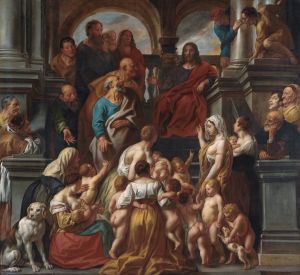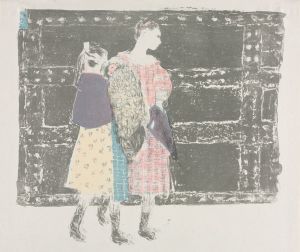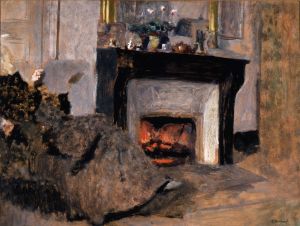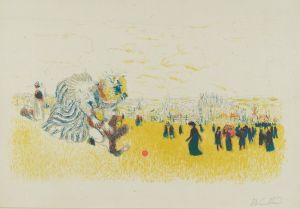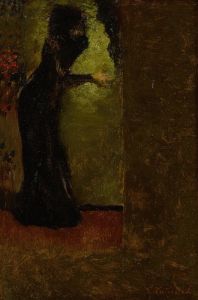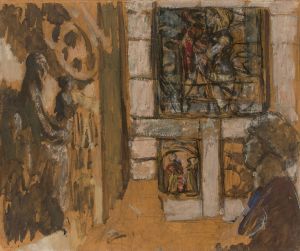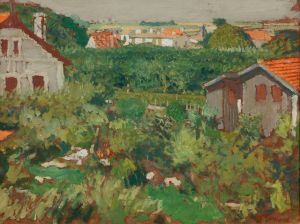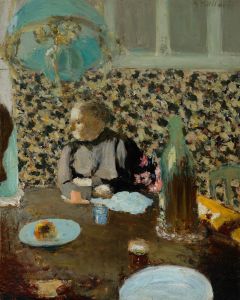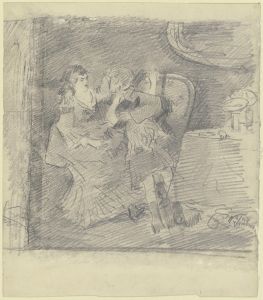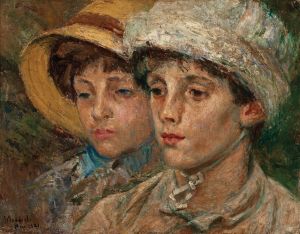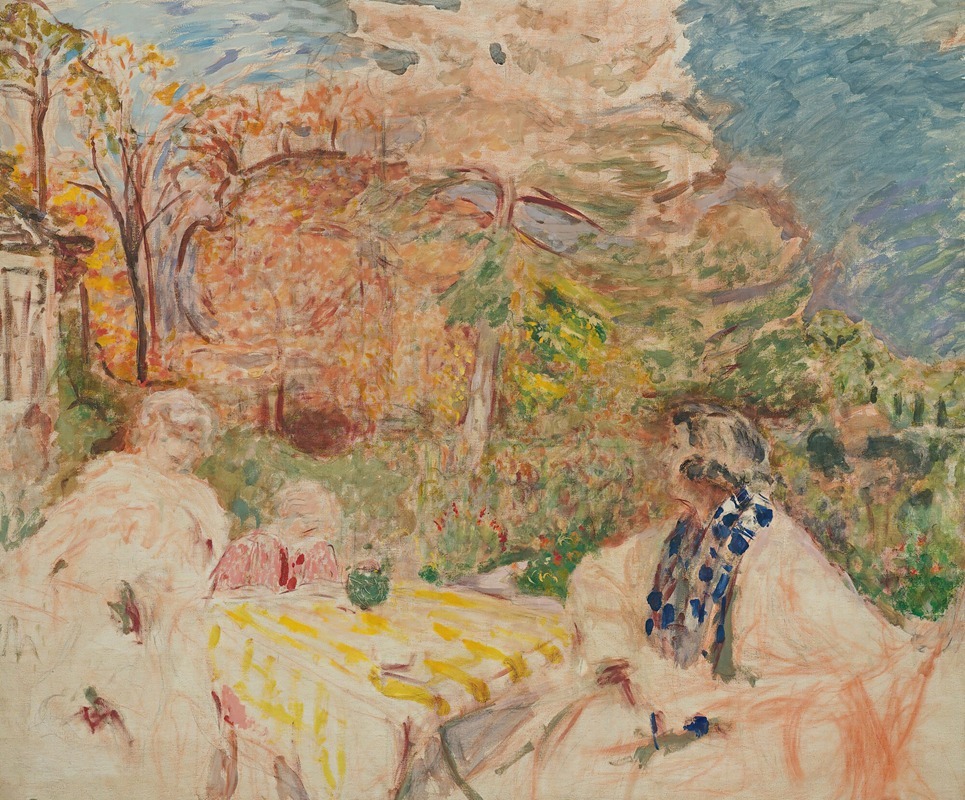
Femmes Et Enfant Au Clos Cézanne
A hand-painted replica of Édouard Vuillard’s masterpiece Femmes Et Enfant Au Clos Cézanne, meticulously crafted by professional artists to capture the true essence of the original. Each piece is created with museum-quality canvas and rare mineral pigments, carefully painted by experienced artists with delicate brushstrokes and rich, layered colors to perfectly recreate the texture of the original artwork. Unlike machine-printed reproductions, this hand-painted version brings the painting to life, infused with the artist’s emotions and skill in every stroke. Whether for personal collection or home decoration, it instantly elevates the artistic atmosphere of any space.
"Femmes Et Enfant Au Clos Cézanne" is a painting by the French artist Édouard Vuillard, a prominent figure associated with the Nabi movement, which was active in the late 19th and early 20th centuries. Vuillard is renowned for his intimate domestic interiors and his ability to capture the subtleties of everyday life with a unique blend of realism and decorative abstraction.
Édouard Vuillard was born on November 11, 1868, in Cuiseaux, France, and he became one of the leading members of the Nabis, a group of avant-garde artists who sought to break away from the traditional approaches of Impressionism. The Nabis were heavily influenced by Symbolism and sought to imbue their works with spiritual and emotional depth, often using bold colors and simplified forms.
"Femmes Et Enfant Au Clos Cézanne" is a testament to Vuillard's distinctive style, which often involved the depiction of domestic scenes and the use of patterned backgrounds. Vuillard had a particular affinity for portraying the private lives of women and children, often capturing them in moments of quiet reflection or engaged in everyday activities. His works are characterized by a sense of intimacy and a focus on the interplay between figures and their environments.
This painting, like many of Vuillard's works, reflects his interest in the decorative arts and his ability to integrate figures seamlessly into their surroundings. Vuillard often used a muted color palette, with soft, harmonious tones that create a sense of tranquility and cohesion within the composition. His brushwork is typically delicate and nuanced, allowing him to convey the textures and patterns of fabrics and wallpapers with great sensitivity.
Vuillard's approach to composition often involved flattening the pictorial space, a technique that he employed to emphasize the decorative quality of his paintings. This approach can be seen in "Femmes Et Enfant Au Clos Cézanne," where the figures and their surroundings are treated with equal importance, creating a unified visual experience.
The title of the painting suggests a connection to Paul Cézanne, another influential figure in the development of modern art. While the exact nature of this connection is not explicitly detailed in the painting itself, it may indicate Vuillard's admiration for Cézanne's work or a thematic or stylistic influence. Cézanne was known for his innovative approach to form and color, and his work had a profound impact on many artists of Vuillard's generation.
Vuillard's paintings often evoke a sense of nostalgia and introspection, capturing the quiet moments of domestic life with a gentle, almost poetic sensibility. His ability to convey the emotional resonance of everyday scenes has earned him a lasting place in the history of art, and his works continue to be celebrated for their beauty and subtlety.
"Femmes Et Enfant Au Clos Cézanne" exemplifies Vuillard's mastery of composition and his unique ability to blend the decorative with the representational. Through his careful attention to detail and his sensitive portrayal of his subjects, Vuillard invites viewers to appreciate the quiet beauty of the world around them, encouraging a deeper contemplation of the ordinary moments that make up our lives.





